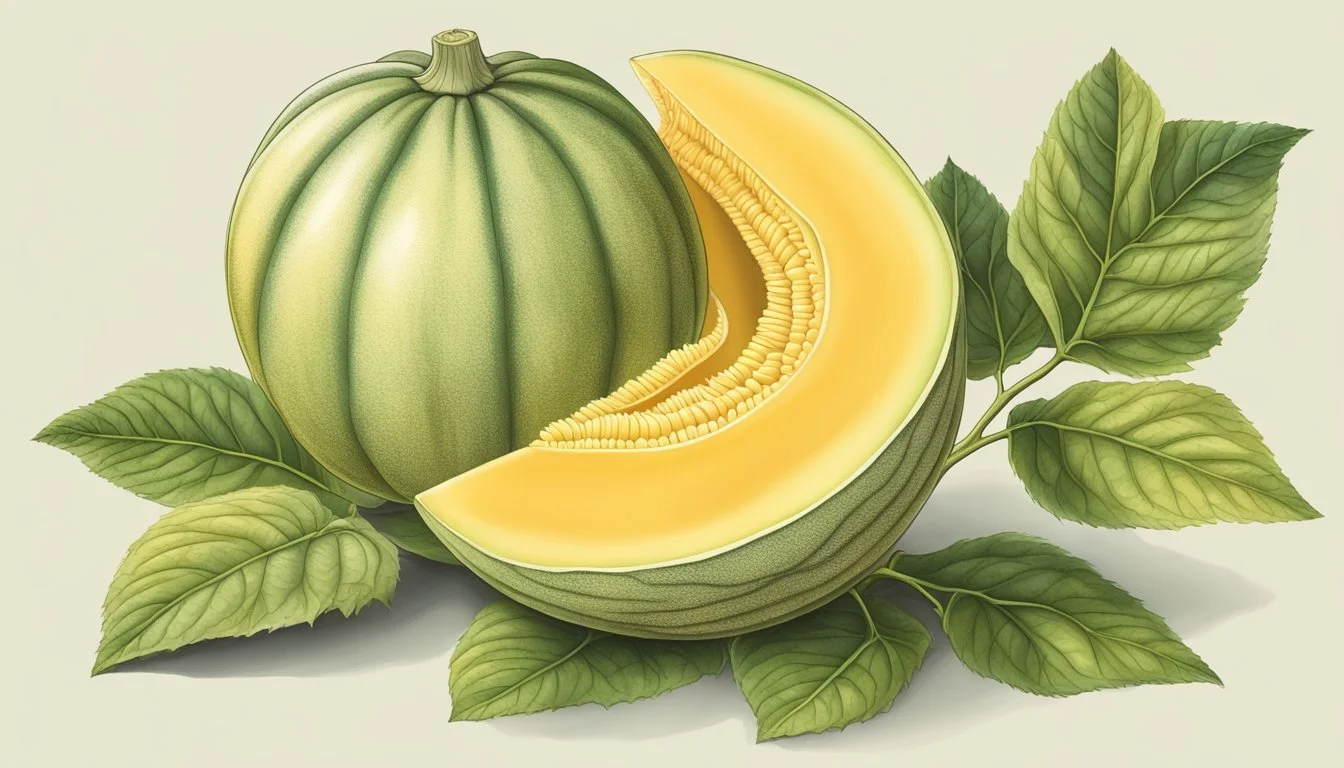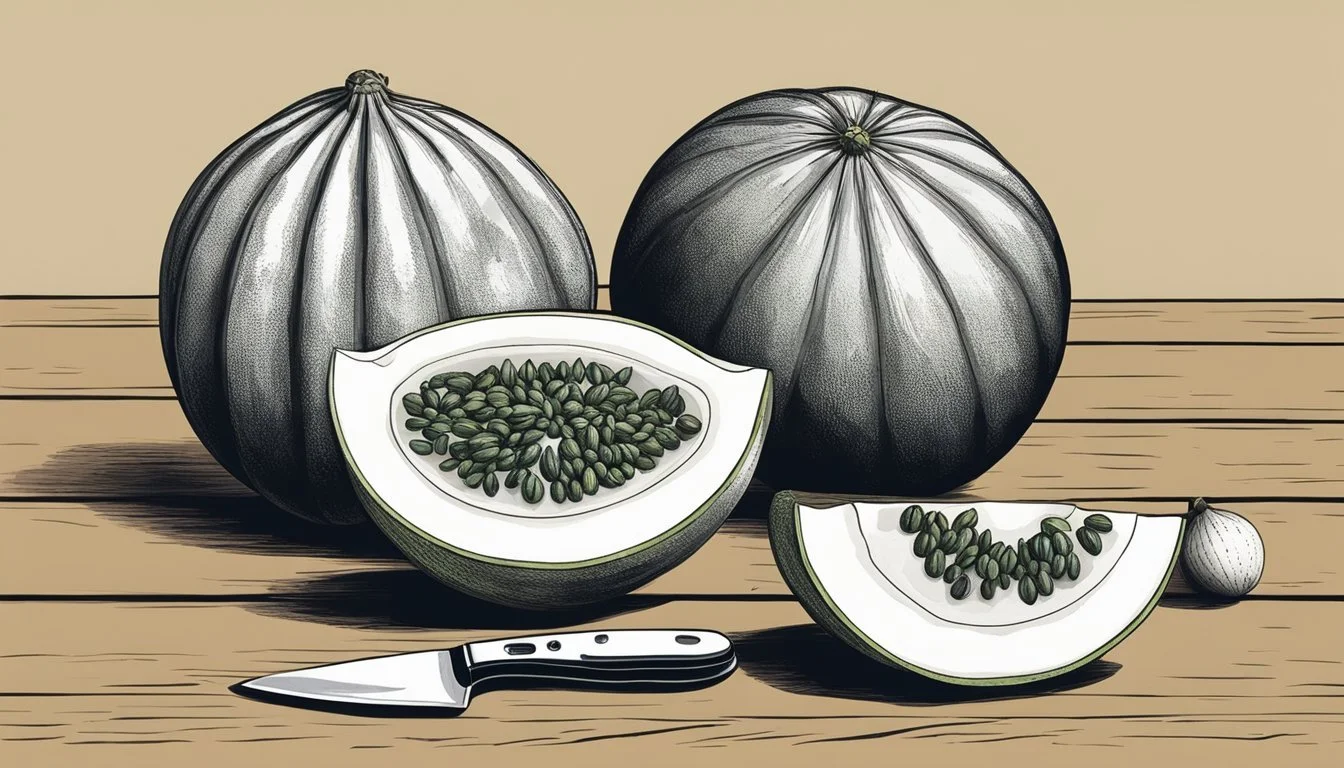How to Tell if a Casaba Melon is Ripe
Expert Tips for Selecting the Perfect Fruit
Selecting a ripe Casaba melon can be a delightful experience, provided one knows how to identify the cues of perfect ripeness. Unlike other fruits, the subtleties of determining whether a Casaba melon is ready to be enjoyed are distinct. A ripe Casaba melon is usually heavy for its size, indicating a generous amount of juicy flesh inside. Its rind transforms from green to a yellowish hue as it matures. Although the melon doesn’t emit a strong fragrance, a mild, sweet aroma can be noted at the blossom end when it’s ripe for consumption.
The texture of the Casaba's skin should feel slightly waxy, and the melon should yield slightly under gentle pressure, especially at the blossom end. This slight give is a signal that the inner flesh has achieved the right level of softness and sweetness. It's important to avoid melons that have soft spots or blemishes, as these are indicators of over-ripeness or potential spoilage. Once home, storing the melon correctly ensures the preservation of its flavor and nutritional value until it’s ready to be cut and served.
Key Takeaways
A ripe Casaba melon is heavier, exhibits a yellowish rind, and offers a mild, sweet smell.
Its skin should feel waxy, and the blossom end should yield slightly under gentle pressure.
Proper storage is key to maintaining the melon's quality until consumption.
Identifying a Ripe Casaba Melon
When selecting a Casaba melon, one can look for several indicators to determine its ripeness before enjoying its sweet flavor. The following subsections outline the specific characteristics to observe.
Color and Skin Texture
A ripe Casaba melon's rind transitions to a more vivid yellow color with a hint of green, with a surface that becomes slightly waxy. The skin texture often changes, displaying a more pronounced netting pattern. These visual cues signal the melon's maturity.
Rind Color: Vivid yellow with green hints
Skin Texture: Pronounced netting, waxy surface
Firmness and Soft Spots
One should check for a balance of firmness with subtle give, particularly at the blossom end. Soft spots may indicate over-ripeness, while a rock-hard surface suggests the fruit is not yet ripe. One seeks to find a melon that yields slightly to gentle pressure, specifically at the opposite end to where it attaches to the vine.
Firmness: Yields slightly to pressure
Soft Spots: Indicator of over-ripeness if excessive
Stem End and Shape
The stem end of a ripe Casaba melon should not be attached to the vine, as this fruit does not naturally detach upon ripening—unlike some other melon varieties. Instead, one should look for a rounded, cushiony area at the stem end. The shape of the melon should be symmetrical and even, without any deformations.
Stem End: Rounded, cushiony
Shape: Symmetrical and even
Aroma and Sound
Ripe Casaba melons emit a light, floral scent detectable at the blossom end. This aroma is akin to tropical fruits and should not be overpowering. Additionally, a ripe melon, when tapped, makes a deep, hollow sound, as opposed to the dull sound emitted by an unripe one. Checking the aroma and sound provides sensory confirmation of ripeness.
Aroma: Light, floral scent at the blossom end
Sound: Deep, hollow sound when tapped
Picking the Perfect Melon
In their search for the perfect casaba melon, one should pay close attention to selection methods, indicators of ripeness, and the melon's variety. These elements are essential for ensuring that the chosen fruit meets expectations in flavor, texture, and aroma.
Selecting at the Store
Appearance: Seek out melons that exhibit a symmetrical shape without dents or irregularities.
Skin Condition: The skin should be free from bruises, soft spots, or moldy patches, indicative of a pristine internal state.
Checking for Ripeness
Firmness: A ripe casaba melon should yield slightly under gentle pressure, especially on the end where the stem was attached.
Aroma: A fragrant, sweet, and slightly floral scent suggests a ripe melon, with a stronger aroma emanating from the stem end.
Sound: When thumped, expect a deep, hollow sound from a ripe melon as opposed to a dull tone from one not yet ready to eat.
Understanding Varieties
Differentiating: Casaba, unlike some other melon varieties, does not exhibit a notable color change when ripe.
Expert Insight: It’s essential to understand that each variety has unique cues for ripeness, with casaba relying more on scent and touch rather than color.
Storing Your Casaba Melon
Proper storage of a casaba melon can significantly influence its shelf life and taste. Knowing how to store the melon before and after cutting is vital for maintaining freshness.
Before Cutting
Casaba melons should be kept at room temperature until they reach peak ripeness. Once ripe, they can be moved to the refrigerator to extend their freshness. Uncut casaba melons typically last for about one to two weeks when refrigerated. For optimal storage, they should be placed in the crisper drawer of the refrigerator to maintain a stable temperature and humidity level.
Room Temperature: Before ripening, store in a cool, well-ventilated space away from direct sunlight.
Refrigerator: Upon ripening, transfer to the refrigerator's crisper drawer.
After Cutting
Once a casaba melon is cut, the exposed flesh should be wrapped tightly with plastic wrap or stored in an airtight container to prevent it from absorbing other flavors and odors in the refrigerator. Sliced or cubed casaba melon should be refrigerated and is best consumed within 3 to 5 days for maximum freshness and taste.
Refrigeration: Mandatory for cut melon; keep in an airtight container or securely wrapped.
Shelf Life: 3 to 5 days once cut and stored in the refrigerator.
Remember that casaba melon's shelf life can depend on its initial ripeness when purchased and the consistency of storage conditions.
Preparing and Serving Casaba Melon
Before serving, understanding the proper preparation techniques for Casaba melon ensures optimal flavor and texture. This sweet melon can be incorporated into various recipes, from refreshing fruit salads to innovative salsas.
Cutting Techniques
To begin, slice the Casaba melon in half and remove the seeds using a spoon. One can then proceed to cut the melon into preferred shapes and sizes, such as cubes or balls, taking care not to include the rind, which is not consumable.
Cubing: For salads and garnishes, cube the melon into bite-sized pieces.
Scooping: Use a melon baller for a decorative touch in fruit salads or as a garnish.
Recipe Ideas
The mild taste of Casaba melon lends itself well to a variety of culinary creations:
Fruit Salads: Combine Casaba melon cubes with other fresh fruits for a simple, yet delightful salad. Enhancing with a squeeze of lemon or lime juice adds a zesty note.
Smoothies: Blend the melon with yogurt or other fruits to create refreshing smoothies.
Sorbets: Puree Casaba melon and freeze the mixture for a cooling sorbet.
Gazpacho: For a twist on the traditional recipe, add diced Casaba to chilled gazpacho.
Salsa: Mix finely chopped Casaba melon with herbs and spices to create a unique salsa that complements grilled dishes (What wine goes well with grilled dishes?).
By following these guidelines, one can prepare and serve Casaba melon in ways that both respect the fruit's delicate flavor and provide a versatile addition to many dishes.
Health Benefits and Nutrition
Casaba melons provide significant nutritional value and health benefits, primarily owing to their vitamin and mineral content, as well as their high water and fiber components. Here is a deeper look into what makes Casaba melons a nutritious choice.
Vitamins and Minerals
Casaba melons are a robust source of essential vitamins and minerals. Notably, they are rich in Vitamin C, which is crucial for the maintenance of a healthy immune system, and potassium, which is important for maintaining normal blood pressure and heart function. Here's a breakdown of some key nutrients per average serving size:
Vitamin C: A substantial contributor to immune defense, aiding in the protection against immune system deficiencies.
Potassium: Vital for heart and kidney function, Casaba melons help maintain electrolyte balance.
Dietary Benefits
The dietary advantages of Casaba melons are manifold. They possess a high water content, which makes them hydrating and supports the body's water balance. Having a high fiber content, they contribute to digestive health and can assist in weight management due to their low-calorie nature. The nutritional benefits of Casaba melons include:
High Water Content: Keeps the body hydrated, which is essential for all bodily functions.
Fiber: Aids in digestion and can lead to feelings of fullness, which may help in controlling calorie intake.
In summary, Casaba melons offer an array of dietary benefits while being low in calories, making them a wholesome addition to a health-conscious diet.
Frequently Asked Questions
This section addresses common inquiries about selecting Casaba melons for events, pairing them with other foods, and debunking ripening myths, with expert tips for ensuring you choose a ripe, flavorful fruit.
Selecting for Events
When choosing Casaba melons for events, consider both weight and external firmness. Heavier melons for their size tend to be juicier, and a ripe Casaba should feel firm with a slight give on the blossom end. While not as fragrant as a cantaloupe, a subtle sweet aroma at the blossom end can also indicate ripeness.
Pairing with Other Foods
Casaba melons, with their mild cucumber-like taste, can be enhanced when paired with other foods. For sweet applications, complementary flavors include honeydew melon, watermelon, or a drizzle of coconut milk. For savory dishes, a sprinkle of ginger or pairing with cucumber can bring out the Casaba's nuanced flavors.
Melon Ripening Myths
Several myths surrounding melon ripening can lead to confusion. Sniffing the melon for a strong aroma or seeking a melon that feels soft all around are not reliable indicators for Casaba melons. Unlike some melons, Casabas do not continue to ripen once removed from the vine. Discolorations on the rind can be normal and should not be confused with mold, which would present as a fuzzy growth.
Casaba Melon Varieties and History
Casaba melons, a less common but distinctive fruit within the melon family, have a rich history and come in various types, many of which trace back to regions where melon cultivation is deeply rooted.
Cucurbitaceae Family Origins
The Casaba melon (Cucumis melo var. inodorus) is part of the larger Cucurbitaceae family, which includes varieties such as cantaloupes, watermelons, and honeydew. Originating in Persia, casaba melons were later introduced to California and Turkey, where they became popular. Unlike their relatives, casabas are known as winter melons due to their peak season in the late summer and fall, and their long shelf life that extends well into the winter months.
Common Features:
Family: Cucurbitaceae
Species: Cucumis melo
Variety: inodorus
Cultivation and Regions
Casaba melons thrive in warm climates and are primarily cultivated in California and other parts of the United States. They grow on vines and are vine-ripened, acquiring a rough, corrugated rind that sets them apart from the smoother-skinned cantaloupe or the netted texture of a muskmelon.
Key Cultivation Regions:
California (USA)
Turkey
Though known as a winter melon, casabas should not be confused with the 'Winter' variety of other melon types, like the crenshaw, which is a hybrid between the casaba and Persian melons. The casaba's cultivation relies on a balanced approach to watering. It needs consistent moisture, yet the soil must be well-drained to prevent diseases.
Cultivation Needs:
Climate: Warm
Soil: Light, rich, well-drained
Care: Regular watering, avoidance of overly wet conditions







